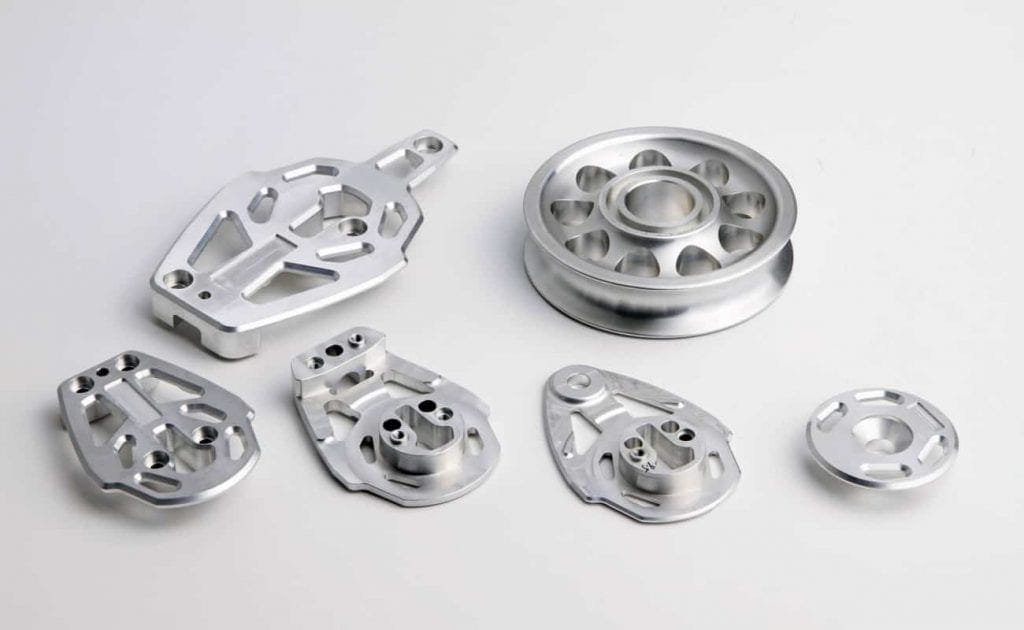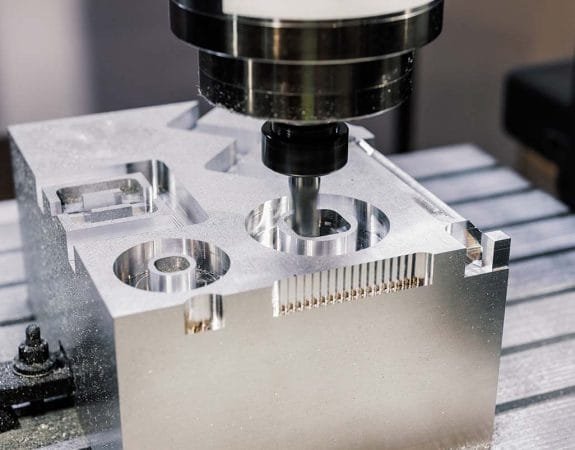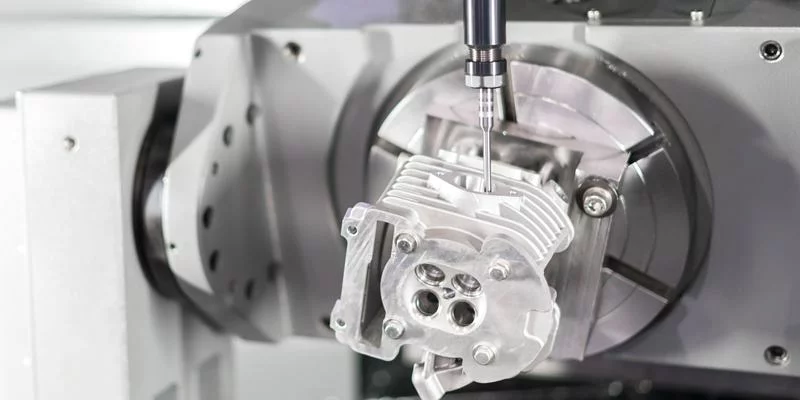CNC Milling is at the heart of modern manufacturing, and understanding cutting speeds is crucial for achieving exceptional quality in every project. In this comprehensive article, we explore the pivotal role of cutting speeds in CNC milling projects, drawing insights from leading industry sources. By analyzing topics ranging from basic definitions to advanced optimization techniques, we reveal how proper cutting speeds not only impact surface finish and tool life but also drive production efficiency. Our discussion is enriched with in‐depth analysis, two detailed tables, and an FAQ section to address common queries. Visit CNCRUSH, a China-based expert with 12 years of experience in cnc machining service, specializing in CNC Milled parts and CNC Turned parts, for industry-leading solutions.

1. Fundamentals of Cutting Speeds in CNC Milling for Superior CNC Milled parts and Reliable cnc machining service
Understanding the basics is the first step toward mastering any machining process. Cutting speed refers to the speed at which the cutting tool engages with the material—usually measured in meters per minute (m/min) or feet per minute (ft/min). It directly influences the quality of the cut, tool wear, and overall production efficiency. When set correctly, cutting speed enables the production of flawless CNC Milled parts while ensuring that a cnc milling service operates efficiently.
Several factors influence the appropriate cutting speed:
- Tool Material: Carbide, high-speed steel, and diamond-coated tools each have different optimal speeds.
- Workpiece Material: Metals like aluminum, steel, and titanium respond differently to cutting speeds.
- Cutting Environment: Coolants, lubricants, and ambient conditions can affect the optimal parameters.
A key formula used in machining is:
Cutting Speed (V) = π × Diameter (D) × Spindle Speed (N) / 1000
This formula helps operators determine the best speed for any given tool and material combination.
Below is a table summarizing typical cutting speeds for common materials:
| Material | Recommended Cutting Speed (m/min) | Typical Feed Rate (mm/min) | Common Application |
|---|---|---|---|
| Aluminum | 250 – 600 | 1500 – 3500 | Aerospace, automotive components |
| Mild Steel | 30 – 100 | 200 – 500 | Machine building, structural parts |
| Stainless Steel | 20 – 60 | 150 – 400 | Medical, automotive, high-precision tools |
| Plastics | 100 – 300 | 800 – 2500 | Consumer goods, prototypes |
Table 1. Typical Cutting Speeds for Common Materials
A strong understanding of these fundamentals sets the stage for optimizing cutting speeds to produce both CNC Milled parts and CNC Turned parts of superior quality. This section is critical for any cnc machining service aiming to balance efficiency and precision.
2. Optimizing CNC Milling Cutting Speeds for Enhanced CNC Turned parts and cnc machining service Efficiency

Optimizing cutting speeds is a multifaceted challenge that involves adjusting parameters to suit both the material and the machining operation. In the context of a robust cnc milling service, the goal is to achieve a balance between productivity and part quality.
Key Considerations:
- Tool Life vs. Productivity: Higher cutting speeds can increase productivity but may reduce tool life if not balanced correctly.
- Machine Capabilities: Modern CNC machines come with adaptive control systems that can adjust speeds in real time based on load and vibration.
- Process Stability: Consistency in feed rates and speeds is crucial to prevent chatter and ensure a smooth finish.
For instance, when machining CNC Turned parts, it is essential to consider the interplay between spindle speed and tool geometry. Too aggressive a cutting speed may lead to increased heat and premature tool wear, while too conservative a speed might result in inefficient production cycles.
The table below illustrates a comparison of recommended parameters for different operations:
| Operation | Optimal Cutting Speed (m/min) | Feed Rate (mm/rev) | Remarks |
|---|---|---|---|
| Roughing | 50 – 100 | 0.1 – 0.2 | Prioritizes material removal |
| Semi-Finishing | 100 – 150 | 0.08 – 0.15 | Balances removal rate with surface quality |
| Finishing | 150 – 200 | 0.05 – 0.1 | Emphasizes surface finish and accuracy |
Table 2. Comparison of Cutting Speed Parameters for Various Operations
Optimizing these parameters results in improved cycle times and enhanced quality for both CNC Milled parts and CNC Turned parts, making the cnc machining service more competitive in sectors like automotive, machine building and automotion.
3. Cutting Speed vs. Feed Rate: Balancing Parameters for CNC Milling and Turning parts Excellence
A common point of confusion in machining is the relationship between cutting speed and feed rate. While cutting speed dictates the speed at which the tool engages with the material, feed rate determines how fast the tool moves along the workpiece. Achieving the ideal balance is essential for producing high-quality parts.
Feed Rate Calculation:
Feed Rate (F) = Spindle Speed (N) × Chip Load (C) × Number of Cutting Edges (Z)
This formula allows for precise adjustments, ensuring that both CNC Milled parts and CNC Turned parts are produced with consistent quality.
Practical Considerations:
- Too High Feed Rates: Can lead to excessive tool load, causing vibrations (chatter) and a poor surface finish.
- Too Low Feed Rates: May result in built-up edge formation, reducing cutting efficiency and increasing production time.
A balanced approach not only improves the surface finish but also extends tool life—a key benefit for any cnc milling service aiming to maintain high operational standards. Positive sentiment surrounds the idea that with careful calibration, manufacturers can achieve both speed and precision, transforming challenges into opportunities for enhanced productivity.
4. Advanced CNC Milling Techniques: Maximizing cnc machining service Capabilities for CNC Milled parts

As machining technology evolves, so do the techniques available to optimize cutting speeds. Advanced CNC milling techniques leverage both hardware improvements and sophisticated software algorithms to refine every aspect of the cutting process.
Key Techniques Include:
- High-Speed Machining (HSM): Utilizes faster spindle speeds and lower feed rates for improved surface finish and reduced cycle times.
- Adaptive Control Systems: Real-time monitoring and adjustments help in maintaining optimal cutting conditions.
- Simulation Software: Enables virtual testing of machining parameters to predict tool wear and optimize cutting paths before actual production.
These techniques empower a cnc machining service to consistently produce top-quality CNC Milling parts with remarkable precision. With innovative approaches, manufacturers can push the boundaries of what is possible, ensuring that each project meets the rigorous standards demanded by sectors such as automotive and machine building and automotion.
5. Precision Engineering: The Role of CNC Milling in Delivering High-Quality CNC Turned parts and cnc machining service
Precision engineering is the cornerstone of high-quality manufacturing. In CNC milling, the correct cutting speed is a critical factor that determines the final quality of the product. For instance, when producing intricate CNC Turned parts, even a slight deviation in cutting speed can lead to imperfections that compromise the integrity of the part.
Quality Control Measures:
- Surface Finish Inspection: Regular monitoring of surface finish to ensure consistency.
- Tool Wear Analysis: Periodic checks to determine if the cutting tool is degrading, which might necessitate a change in cutting speed.
- Dimensional Accuracy: Using high-precision measurement tools to ensure that each part meets the exact specifications.
By focusing on precision, a cnc machining service can guarantee that every CNC Milling and turning part meets the high standards expected by global clients. The rigorous approach taken by CNCRUSH—leveraging 12 years of expertise in cnc machining service—ensures that quality is never compromised, even under the most demanding production scenarios.
6. Material Considerations in CNC Milling: Impact on CNC Milled parts and CNC Turned parts Performance

Different materials require different milling parameters. The selection of cutting speeds must be tailored to the specific characteristics of the workpiece material to avoid adverse effects such as overheating, tool wear, or poor surface finish.
Material-Specific Considerations:
- Aluminum: Its softness allows for higher cutting speeds, but care must be taken to avoid built-up edge formation.
- Mild and Stainless Steel: These materials require lower cutting speeds to reduce friction and heat buildup.
- Plastics and Composites: Often demand moderate speeds with precise control to prevent melting or delamination.
Understanding these material-specific factors is vital for optimizing production. A comprehensive approach to setting cutting speeds can significantly improve the performance of both CNC Milled parts and CNC Turned parts, thereby enhancing the overall efficiency of the cnc machining service.
Example Material Comparison:
| Material | Optimal Cutting Speed (m/min) | Challenges | Typical Applications |
|---|---|---|---|
| Aluminum | 300 – 600 | Built-up edge formation | Aerospace, automotive components |
| Mild Steel | 30 – 100 | Increased friction and tool wear | Structural components, machine parts |
| Stainless Steel | 20 – 60 | Heat management, higher tool wear | Medical devices, high-precision tooling |
| Plastics | 100 – 300 | Melting, potential for chip clogging | Prototyping, consumer products |
This table highlights how tailoring cutting speeds to material properties can result in superior quality CNC Milled parts and CNC Turned parts. It underscores the importance of customized milling parameters in any advanced cnc machining service.
7. Innovative Strategies for Cutting Speed Optimization: A cnc machining service Guide to CNC Milled parts
Innovation is key to staying competitive in today’s fast-paced manufacturing environment. By leveraging modern technology, manufacturers can fine-tune cutting speeds to achieve optimal performance.
Strategies Include:
- Real-Time Data Analytics: Using sensors and IoT devices to monitor tool performance and adjust cutting speeds dynamically.
- Predictive Maintenance: Employing machine learning algorithms to predict tool wear and schedule maintenance before issues arise.
- Simulation-Driven Optimization: Running virtual simulations to test various cutting speeds and feed rates, thereby identifying the optimal parameters for each job.
These strategies not only improve production efficiency but also help in consistently delivering high-quality CNC Milling parts. For any cnc machining service provider, such as CNCRUSH, adopting these innovative techniques means staying ahead of the curve while offering unmatched precision and reliability to clients in industries including automotive, machine building and automation.
8. Real-World Applications: CNC Milling Cutting Speeds in Automotive, Machine Building and Automotion for CNC Turned parts
The impact of cutting speed extends far beyond the shop floor—it plays a pivotal role in real-world applications. In industries such as automotive, machine building and automotion, precise control over cutting speeds ensures that components not only meet design specifications but also perform reliably under operational stresses.
Industry-Specific Impacts:
- Automotive: In the automotive sector, components must endure high levels of stress and vibration. Optimal cutting speeds contribute to better surface finishes and dimensional accuracy, leading to safer and more durable parts.
- Machine Building: Complex assemblies in machine building require tight tolerances. Fine-tuning cutting speeds can help reduce the risk of component failure, ensuring that CNC Turned parts fit perfectly within larger systems.
- Automotion: High-speed automated production lines benefit from the increased efficiency that comes with correctly optimized cutting speeds. This not only improves cycle times but also reduces downtime, contributing to overall operational excellence.
Through rigorous process control and continuous improvement, a dedicated cnc machining service like CNCRUSH leverages its 12 years of experience to deliver outstanding CNC Milled parts and CNC Turned parts that meet the stringent demands of these industries.
9. Troubleshooting and Quality Control in CNC Milling: Enhancing CNC Milled parts and CNC Turned parts through Expert cnc machining service
Even with precise planning, challenges can arise during the machining process. Troubleshooting issues related to cutting speeds is essential to maintaining quality and efficiency.
Common Issues Include:
- Chatter and Vibration: Occurs when cutting speeds are too high or feed rates are improperly set, leading to poor surface finishes and potential damage to both the tool and the workpiece.
- Excessive Tool Wear: Often a result of too aggressive cutting conditions, which can lead to costly downtime.
- Poor Surface Finish: May be due to inappropriate speeds causing built-up edge or thermal damage.
Quality Control Measures:
- Regular Monitoring: Continuous observation of machining parameters using advanced sensors.
- Periodic Calibration: Ensuring that CNC milling machines are operating within specified tolerances.
- Data-Driven Adjustments: Leveraging historical data and real-time analytics to make informed adjustments to cutting speeds.
By addressing these issues proactively, a cnc machining service can ensure that each CNC Milled part and CNC Turned part meets the highest quality standards. This proactive approach not only minimizes downtime but also reinforces the reputation of providers like CNCRUSH in delivering consistent, high-quality results.
10. Future Trends in CNC Milling: Embracing Technology for Next-Gen CNC Milled parts, CNC Turned parts, and Global cnc machining service Innovations
Looking forward, the future of CNC milling is shaped by rapid advancements in technology. Emerging trends are poised to transform how cutting speeds are optimized, paving the way for unprecedented levels of precision and efficiency.
Emerging Trends Include:
- Integration of AI and Machine Learning: These technologies will allow machines to learn from past operations and automatically adjust cutting speeds in real time.
- Enhanced Connectivity and IoT: The increasing use of connected devices will enable continuous monitoring and remote adjustments, ensuring that machining parameters are always optimized.
- Sustainable Machining Practices: As industries strive for greener manufacturing, optimized cutting speeds can contribute to energy savings and reduced material waste.
- Hybrid Machining Techniques: Combining traditional CNC milling processes with additive manufacturing to achieve complex geometries and enhanced material properties.
As a forward-thinking cnc machining service, CNCRUSH is embracing these innovations to provide next-generation CNC Milled parts and CNC Turned parts. With 12 years of industry experience, our commitment to integrating cutting-edge technologies ensures that our clients in automotive, machine building and automotion always receive the best possible service.
FAQ
Q1: What is cutting speed and why is it important in CNC Milling?
A: Cutting speed refers to the rate at which a cutting tool moves along the workpiece. It is crucial because it directly affects tool life, surface finish, and production efficiency.
Q2: How do cutting speed and feed rate differ?
A: Cutting speed is the velocity of the tool relative to the workpiece, while feed rate is the speed at which the tool advances. Both parameters must be balanced to optimize machining performance.
Q3: What factors influence the optimal cutting speed?
A: Factors include tool material, workpiece material, machine capabilities, and environmental conditions such as coolant and lubricant usage.
Q4: Can incorrect cutting speeds affect the quality of CNC Milled parts and CNC Turned parts?
A: Yes, using improper cutting speeds can lead to issues such as tool wear, poor surface finish, and dimensional inaccuracies, ultimately affecting the quality of both CNC Milled parts and CNC Turned parts.
Q5: Where can I find professional cnc machining service for high-quality CNC Milling projects?
A: Visit CNCRUSH, a China-based company with 12 years of experience, specializing in CNC Milled parts and CNC Turned parts to meet all your machining needs.
Conclusion
In conclusion, CNC Milling is more than just a process—it is a critical element of modern manufacturing that demands precise control over cutting speeds and feed rates. From understanding the fundamentals to applying advanced optimization techniques, every step of the process contributes to producing high-quality CNC Milled parts and CNC Turned parts. Our detailed analysis has explored the interplay between cutting speed, feed rate, material properties, and machining parameters, emphasizing the need for continuous monitoring and innovation.
For manufacturers seeking a reliable cnc machining service, especially in demanding fields like automotive, machine building and automotion, mastering cutting speeds is essential. With over 12 years of experience, CNCRUSH offers high-precision solutions that deliver consistent results and unmatched quality. Our expertise in CNC Milling ensures that every part meets stringent standards, while our advanced techniques and commitment to innovation set us apart in the global market.
We invite you to explore our website, CNCRUSH, to learn more about our capabilities and how our cnc machining service can transform your manufacturing projects. By leveraging the latest in technology and industry best practices, we ensure that your CNC Milled parts and CNC Turned parts not only meet but exceed your expectations.
